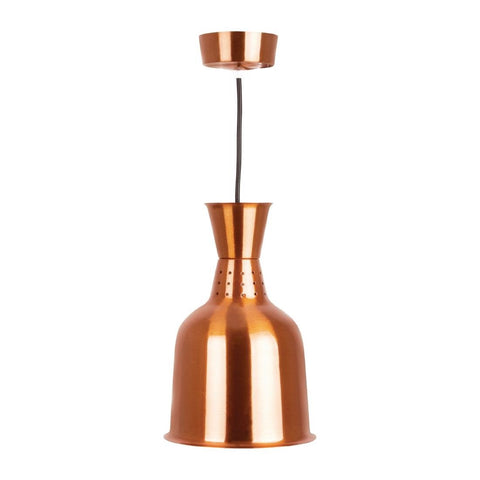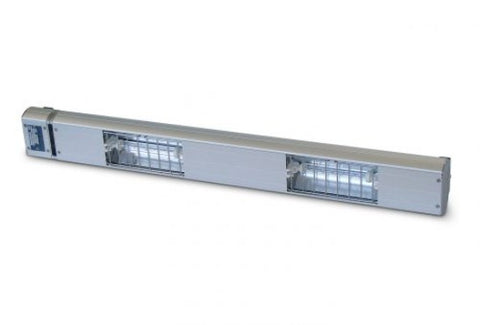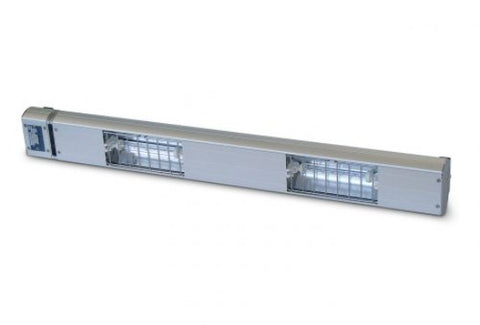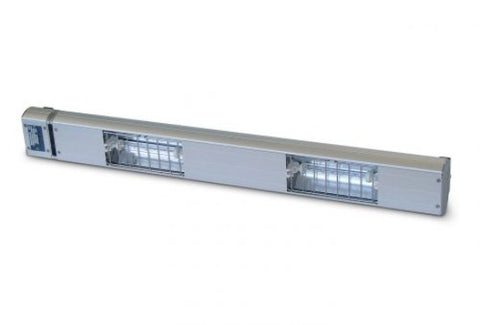


 Apuro Heat Lamp Shade Brass Finish
Apuro Heat Lamp Shade Brass Finish
185(W) x 330(H) x 186(D)mm

 Apuro Retractable Dome Heat Lamp Shade Silver Finish
Apuro Retractable Dome Heat Lamp Shade Silver Finish

 Apuro Retractable Heat Lamp Shade Silver Finish
Apuro Retractable Heat Lamp Shade Silver Finish

 Benchstar Strip Warmer Heater 1219mm - HSW1200
Benchstar Strip Warmer Heater 1219mm - HSW1200
1219(W) x 155(D) x 73(H)mm

 F.E.D Pull Down Heat Lamp Black 290Mm Round HYWCL14
F.E.D Pull Down Heat Lamp Black 290Mm Round HYWCL14
290(W) x 290(D) x 600 - 1500(H)mm

 F.E.D Pull Down Heat Lamp Black HYWAL03
F.E.D Pull Down Heat Lamp Black HYWAL03
175(W) x 175(D) x 600 - 1500(H)mm

 Apuro Retractable Conical Heat Lamp Shade Gold Finish
Apuro Retractable Conical Heat Lamp Shade Gold Finish

 HLD0001W Venus Heatlamp – Matte White
HLD0001W Venus Heatlamp – Matte White
267(W) x 1800(H) x 267(D)mm

 HLD0002B Mars Heatlamp – Matte Black
HLD0002B Mars Heatlamp – Matte Black
267(W) x 1800(H) x 267(D)mm


 Roband Fabricator Quartz Heat Lamp Assembly 825mm
Roband Fabricator Quartz Heat Lamp Assembly 825mm
825(W) X 108(D) X 65(H)mm


 Roband Fabricator Quartz Heat Lamp Assembly 1725mm
Roband Fabricator Quartz Heat Lamp Assembly 1725mm
1725(W) X 108(D) X 65(H)mm


 Roband Fabricator Infra-Red Heating Assembly 1725mm
Roband Fabricator Infra-Red Heating Assembly 1725mm
1725(W) X 108(D) X 65(H)mm


 Roband Quartz Heat Lamp Assembly 2100mm
Roband Quartz Heat Lamp Assembly 2100mm
2100(W) X 110(D) X 65(H)mm


 Roband Quartz Heat Lamp Assembly 1500mm
Roband Quartz Heat Lamp Assembly 1500mm
1500(W) X 110(D) X 65(H)mm

 Benchstar Strip Warmer Heater 914mm - HSW900
Benchstar Strip Warmer Heater 914mm - HSW900
914(W) x 155(D) x 73(H)mm

 Benchstar Strip Warmer Heater 609mm - HSW600
Benchstar Strip Warmer Heater 609mm - HSW600
609(W) x 155(D) x 73(H)mm

 Benchstar Strip Warmer Heater 1829mm - HSW1800
Benchstar Strip Warmer Heater 1829mm - HSW1800
1820(W) x 155(D) x 73(H)mm

 Benchstar Strip Warmer Heater 1524mm - HSW1500
Benchstar Strip Warmer Heater 1524mm - HSW1500
1524(W) x 155(D) x 73(H)mm

 HLD0002S Mars Heatlamp – Silver
HLD0002S Mars Heatlamp – Silver
267(W) x 1800(H) x 267(D)mm
Heat lamps are a must-have for any high-capacity commercial kitchen. They’ll keep your meals warmed to the perfect temperature until every order for the same table is ready. Whether you’re starting out with a new restaurant or simply want to streamline and improve the operations of an existing establishment, upgrading with heat lamps is essential.
They’re available in a range of models and styles, from strip heaters to stylish pendant lamp-style heaters that enhance the aesthetics and efficiency of your restaurant.
Explore the broad range of best commercial heat lamps from Restaurant Equipment Online and find the perfect options for your kitchen. With options ranging from conventional heat lamps to infrared models, fixed or pull-down, you can improve efficiency and save on energy costs.
How do you choose between different heat lamps?
The key function of heat lamps is simple. However, there are plenty of options to choose from and picking the best option for your kitchen requires some consideration.
Depending on whether you want a balance of heat and light, or only want reliable heating, you’ll need to choose between quartz and infrared lights. Quartz lighting is the option to choose if you need both illumination and heat, though they don’t generate as much warmth as infrared options. They’re a good choice for kitchens that need heating at front of house or in the kitchen itself. Quartz lighting often has more visually appealing options, including pendant lights.
Infrared lamps, also referred to as convection lamps, offer lower light levels but are more energy efficient and heat your food more efficiently and directly rather than heating the air around it. They’re the perfect choice if you’re trying to keep energy bills down and already have adequate lighting in your food storage area.
The next consideration is whether you want pull-down lamps or mounted lamps. Pull-down lamps, as the name suggests, can be moved easily and put back into place when you’re not using them. They offer both heating and light, making them perfect for merchandising to display your stock. These are especially beneficial for food trucks, along with options like countertop hot food displays. They’re a convenient option but generally offer less heat than mounted lamps.
If your kitchen needs something that offers more reliable and far reaching heat, mounted lamps are a better option. They not only deliver more power and heat but they’re also often slightly larger.
Regardless of whether you choose a pull-down heat lamp or a mounted model, you’ll be able to choose from quartz or infrared. For high-capacity food warming capabilities, you may also want to consider hot food displays or bain maries.
How much energy does it consume?
The energy consumption of your heat lamps will depend on the wattage, whether you choose quartz or infrared heating and how much you’re using them. Wattage is one of the key things to look at when choosing a model, with higher wattage models requiring more power to run, either by generating light and heat or heat alone.
What is the difference between infrared and traditional heat lamps?
Infrared light heat lamps operate by generating light on a non-visible spectrum, which is transferred into the atmosphere as heat. This penetrates your food more deeply, ensuring it’s warm on the inside as well as on the surface. Their heat is instantaneous, warming your food as soon as you switch them on. They’re the most energy-efficient option, though they generally offer less illumination.
Traditional heat lamps also heat the air around the food but offer more light. They generally take longer to heat up, meaning they’ll consume slightly higher volumes of electricity and will need to be switched on in advance. Brands like Roband offer both traditional and infrared heat lamps to suit your preferences.
How far should a heat lamp be placed from food?
To ensure even heat distribution, we recommend keeping your heat lamp around 35cm to 45cm above your food. Each heat lamp will come with specific guidelines, we recommend checking the instructions for the unique model you’ve chosen.




























